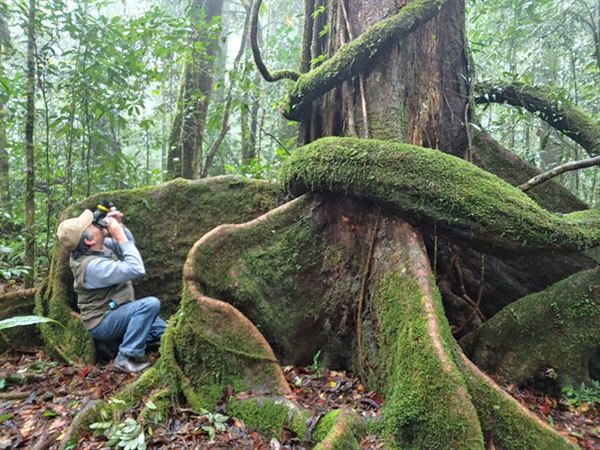 |
| Hon Giao has an extremely diverse and rich ecosystem. — Photo vntrip.vn |
Hon Giao forest is part of Bidoup-Nui Ba National Park, the core of the Langbiang Biosphere Reserve which was recognised by the UN culture agency UNESCO in 2015.
It is about 60km from Da Lat City and is located on the border between two provinces Lam Dong and Khanh Hoa.
Following Highway 27C from Nha Trang to Da Lat, the first place we felt the cold from the plateau was Hon Giao.
According to information from the international research centre for tropical forests, the forest in Hon Giao is a type of pygmy forest that is formed by different characteristics of climate and soil. Here, small trees (only about 10m tall) grow with a density of nearly 4,000 trees/ha, compared with 800-900 trees/ha in neighbouring areas. Because of the special climate, with high rainfall and high humidity all year round, more than 100 species of moss appear in this forest.
The locals often call Hon Giao 'the moss forest'.
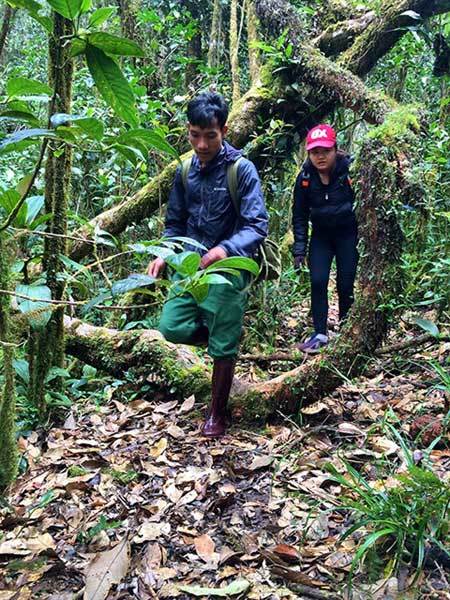 |
| Trekking in Hon Giao forest. — Photo infonet.vietnamnet.vn |
In the middle of the forest, the sun alternates through the leaves, shining on the moss still covered in morning dew, making the droplets glow. Moss covers the trunks with a thick layer of green from base to top. On the large horizontal trees, long moss hangs down like a very beautiful curtain.
That scene was enough for us to forget all the noise in the city and immerse ourselves in the green nature. A friend in our group dreamt of a wedding photoshoot in this breathtakingly beautiful landscape.
Looking at the beautiful scenery of the mossy forest, we suddenly remembered a story shared by a friend on Facebook that, in Japan, people see moss-viewing as an effective form of relaxation therapy. Indeed, we had a relaxing time in the mossy forest. The worries of life suddenly seem to disappear to make room for the comfort of being in harmony with the wonderful nature.
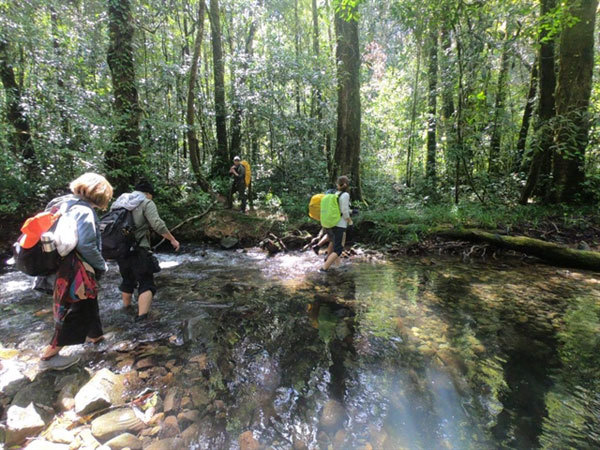 |
| Hon Giao is attracting more and more tourists. — Photo phuotvivu.com |
There are more than 12,000 species of flora and fauna living in Hon Giao, many of which are listed in the Red Book of Việt Nam. The forest has three types of ancient trees called "inviolable" trees by the Cơ Ho ethnic group, including pinus krempfii, pơ mu and bạch tùng trees.
There are also many varieties of orchid living in Hon Giao. Orchids grow around the trunks of large trees, clinging to even small branches, spreading on the paths along the rotten branches. In February and March every year, hundreds of thousands of orchids bloom on the green background of trees and moss.
Along the forest, we also found many streams flowing. The stream water is very clear, small fish swim around in the cold water. We decided to camp by a small stream to enjoy nature more.
Unlike other trips, the one to Hon Giao means relaxing under the forest trees, listening to the chirping birds and talking to each other about the plants along the way.
Source: Vietnam News
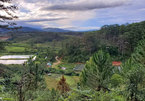
Flora & fauna survive under watchful eyes
Since the giant muntijac (Muntiacus vuquangensis) - a critically endangered species of deer - was found at the Bidoup-Nui Ba National Park in Lam Dong in 2019, the park has been the only site in Vietnam confirmed as hosting the species.
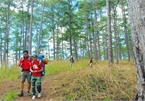
Exploring Bidoup - Nui Ba National Park in Lam Dong province
Bidoup - Nui Ba National Park, 50 km from the downtown of Da Lat city to the north, is a perfect destination for a weekend trip for nature lovers, thanks to its most beautiful and pristine pine forest in Lam Dong province.